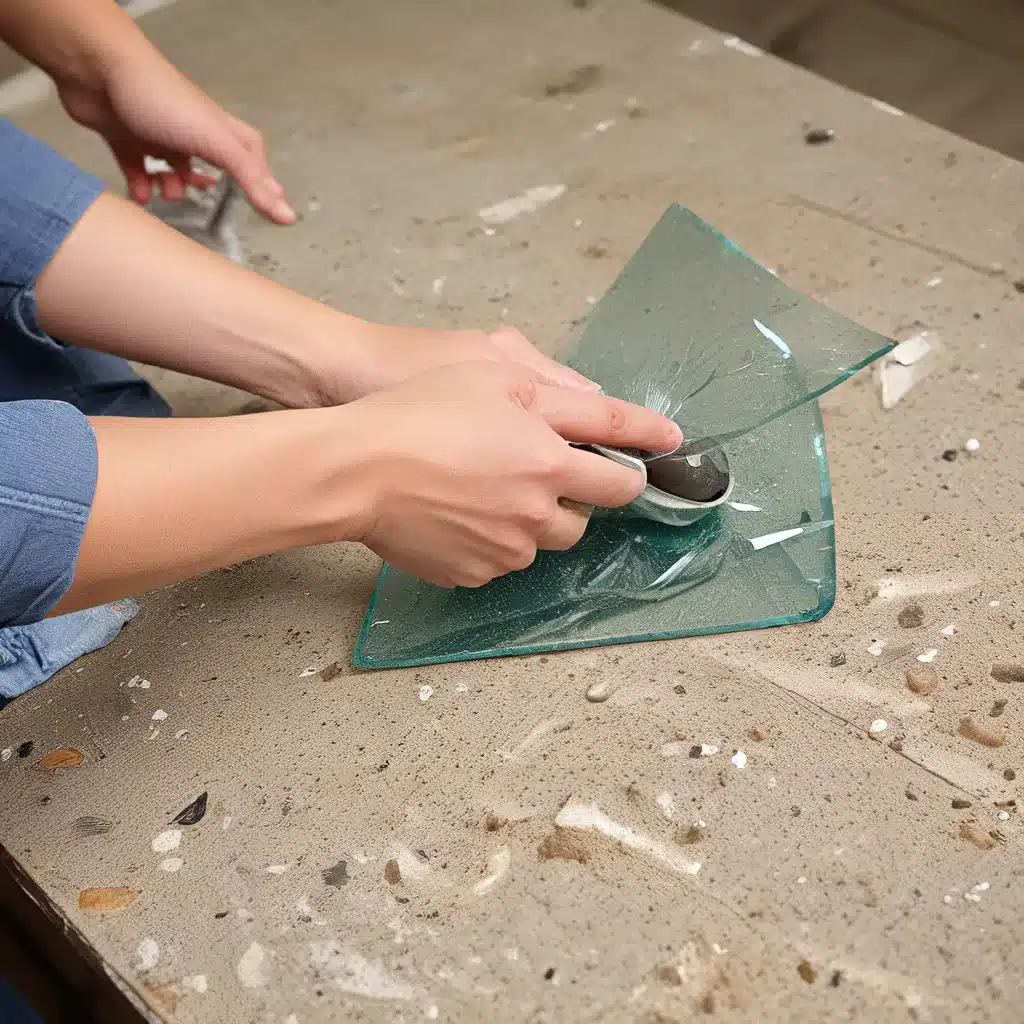Confronting the Hazardous Reality of Broken Glass
I’ll never forget the day I accidentally knocked over a glass in the kitchen. As it shattered on the floor, my heart sank. Not only did I have a mess to clean up, but I also faced the daunting task of ensuring the area was safe for my family. Broken glass can be an insidious threat, lurking in the most unexpected places and ready to inflict serious harm.
That’s why the topic of safely removing sharp objects and broken glass is so crucial. Whether you’re dealing with a simple spill or uncovering a hidden shard, the potential for injury is ever-present. As someone who has experienced this firsthand, I know the importance of approaching the situation with caution and the right knowledge.
Understanding the Risks of Broken Glass
Broken glass is no laughing matter. It’s a serious hazard that can lead to deep cuts, lacerations, and even life-threatening injuries. The sharp edges of shattered glass can easily pierce the skin, causing severe bleeding and the potential for infection. Even the smallest shard can pose a significant risk, especially for young children and pets who may not be aware of the dangers.
But the risks don’t stop there. Broken glass can also be a tripping hazard, leading to falls and potentially even more serious injuries. And let’s not forget the emotional toll – the sight of shattered glass can be unsettling and stressful, especially for those with a fear of sharp objects or a history of accidents.
Preparing for Safe Cleanup
When faced with the challenge of cleaning up broken glass, it’s crucial to approach the task with caution and the right tools. The first step is to assess the situation and determine the extent of the damage. Is it a small spill or a larger, more complex mess? This will help you determine the appropriate course of action.
Once you’ve assessed the situation, it’s time to gather the necessary supplies. This includes sturdy gloves, preferably made of cut-resistant materials like Kevlar or leather. You’ll also need a dustpan and broom, a vacuum cleaner, and heavy-duty trash bags to safely contain and dispose of the broken glass.
Executing the Cleanup
With your supplies ready, it’s time to get to work. Start by carefully sweeping up the larger shards, taking care to avoid any sharp edges. Sweep them into the dustpan and then transfer them to the trash bag. Be sure to double-bag the glass to prevent any potential leaks or punctures.
Next, use the vacuum cleaner to thoroughly clean the area, paying special attention to any nooks and crannies where smaller pieces may have fallen. Vacuum slowly and methodically, making sure to cover every inch of the affected space.
Once the visible glass has been removed, it’s time to inspect the area for any remaining hazards. Run your hands gently over the surface, feeling for any sharp edges or hidden fragments. If you encounter any, carefully pick them up with your gloved hands and place them in the trash bag.
Disposing of Broken Glass Safely
Now that the cleanup is complete, it’s time to dispose of the broken glass safely. Seal the trash bag securely and label it as “Broken Glass” to ensure proper handling. Check with your local waste management provider for the appropriate disposal method in your area, as some may have specific guidelines or collection services for hazardous materials.
Remember, never attempt to recycle broken glass. The sharp edges can pose a risk to waste management workers and contaminate other recyclable materials. Dispose of it properly to protect yourself and others.
Preventing Future Incidents
While accidents happen, there are steps you can take to minimize the risk of broken glass in your home or workplace. Regularly inspect your glassware for any cracks or chips, and replace any items that are showing signs of wear. Be extra cautious when handling fragile items, and consider using shatterproof alternatives where possible.
And if you do encounter a broken glass situation, don’t panic. Stay calm, assess the situation, and follow the proper safety protocols. By being prepared and taking the right precautions, you can protect yourself and your loved ones from the dangers of broken glass.
Remember, your safety and the safety of those around you should always be the top priority when dealing with sharp objects and broken glass. So, let’s embrace this vital knowledge and empower ourselves to handle these situations with confidence and care.







